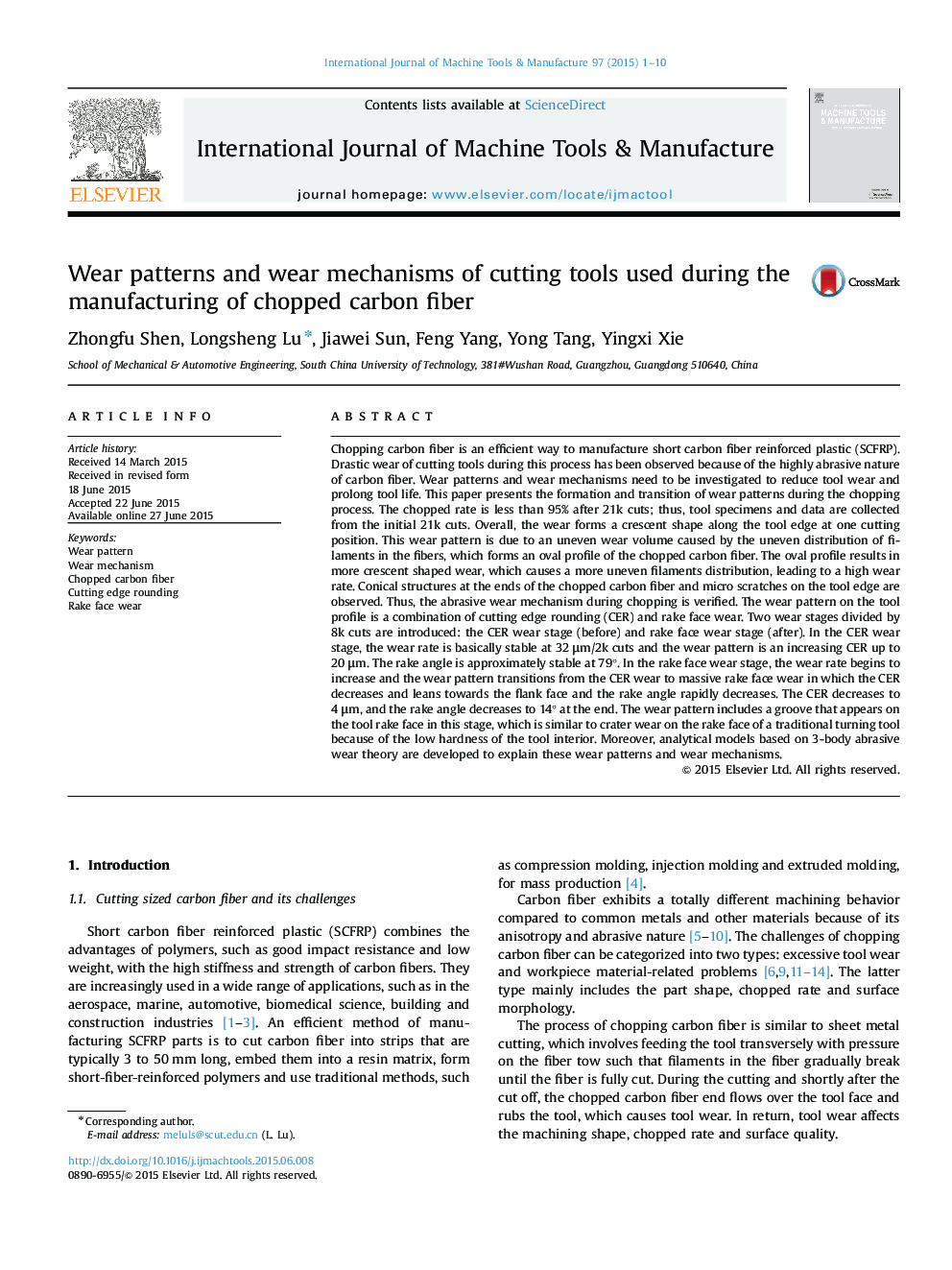| Article ID | Journal | Published Year | Pages | File Type |
|---|---|---|---|---|
| 784337 | International Journal of Machine Tools and Manufacture | 2015 | 10 Pages |
•The abrasive wear mechanism during chopping carbon fiber is verified.•Uneven distribution of filaments in fibers causes crescent shape wear on tool side.•The wear pattern on tool profile is a combination of CER and RFW.•CER wear during chopping is dominant at first and wear rate is basically stable.•Analytical models are established to explain CER and RFW formation.
Chopping carbon fiber is an efficient way to manufacture short carbon fiber reinforced plastic (SCFRP). Drastic wear of cutting tools during this process has been observed because of the highly abrasive nature of carbon fiber. Wear patterns and wear mechanisms need to be investigated to reduce tool wear and prolong tool life. This paper presents the formation and transition of wear patterns during the chopping process. The chopped rate is less than 95% after 21k cuts; thus, tool specimens and data are collected from the initial 21k cuts. Overall, the wear forms a crescent shape along the tool edge at one cutting position. This wear pattern is due to an uneven wear volume caused by the uneven distribution of filaments in the fibers, which forms an oval profile of the chopped carbon fiber. The oval profile results in more crescent shaped wear, which causes a more uneven filaments distribution, leading to a high wear rate. Conical structures at the ends of the chopped carbon fiber and micro scratches on the tool edge are observed. Thus, the abrasive wear mechanism during chopping is verified. The wear pattern on the tool profile is a combination of cutting edge rounding (CER) and rake face wear. Two wear stages divided by 8k cuts are introduced: the CER wear stage (before) and rake face wear stage (after). In the CER wear stage, the wear rate is basically stable at 32 μm/2k cuts and the wear pattern is an increasing CER up to 20 μm. The rake angle is approximately stable at 79°. In the rake face wear stage, the wear rate begins to increase and the wear pattern transitions from the CER wear to massive rake face wear in which the CER decreases and leans towards the flank face and the rake angle rapidly decreases. The CER decreases to 4 μm, and the rake angle decreases to 14° at the end. The wear pattern includes a groove that appears on the tool rake face in this stage, which is similar to crater wear on the rake face of a traditional turning tool because of the low hardness of the tool interior. Moreover, analytical models based on 3-body abrasive wear theory are developed to explain these wear patterns and wear mechanisms.
